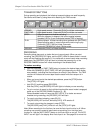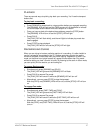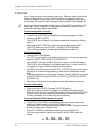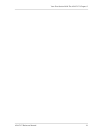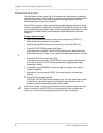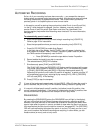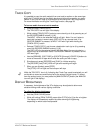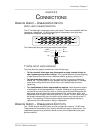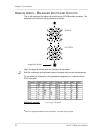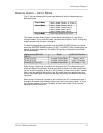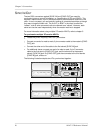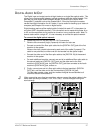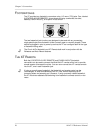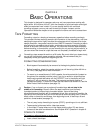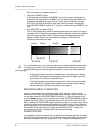
Connections: Chapter 3
ADAT XT Reference Manual 23
CHAPTER 3
CONNECTIONS
ANALOG AUDIO – UNBALANCED INPUTS
I
NPUT JACK CHARACTERISTICS
The XT includes eight unbalanced, phono jack inputs. These are compatible with low-
impedance, unbalanced, -10 dBV outputs typical of equipment such as mixers,
synthesizers, samplers, direct boxes, etc.
The unbalanced input jack wiring convention is as follows:
TipSignal
Sleev
eG
round
Tip
Sleeve
TYPICAL INPUT JACK HOOKUPS
The input jacks are typically hooked up in one of three ways:
• To the console’s direct tape outs (these patch a single channel directly to
tape, bypassing most mixer circuitry). This is preferred when the signals going
to tape require none of the mixer’s features (effects, grouping, routing, etc.).
• To eight mixer bus outputs. You can use the mixer for grouping, premixing,
effects, etc. This puts more circuitry between the input signals and XT, although
since most routing can be done at the mixer, you’ll seldom need to do any
repatching.
• To a combination of direct outputs and bus outputs. Some situations require
a combination of the two approaches.
Example:
Consider a live gig you want to
record with two vocal mics, four mics on drums, two direct feeds from guitar and
bass amps, and one direct feed from keyboards. The vocals, bass, guitar, and
keyboards could be taken direct and go to five XT tracks. The four drum mics can
be mixed to stereo within your mixer sent to the submix outs, then go to two XT
tracks. The remaining XT track could be used to record audience sounds or
capture one of the instruments in stereo, if applicable.
ANALOG AUDIO – UNBALANCED OUTPUTS
The -10 dBV outputs use RCA jacks, and carry signals at a nominal -10 dBV level.
These should be connected to your mixer’s channel line inputs or tape returns. The
unbalanced outputs wiring scheme is similar to that of the unbalanced inputs (see
previous section).



